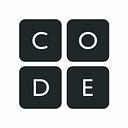How Hour of Code 2021 showed us #CSEverywhere
Classrooms around the world used code to write poems, have a dance party, and simply say “Hello world!”
This year, students and teachers used Hour of Code to explore the awesome relationship that computer science has with different subjects in school, different industries, and even different career paths. From seeing code pop up in unexpected places — like this dancing Spanish class — to watching poem after poem roll in from our Poem Art activity, this Hour of Code was full of creative connections!
Hour of Code 2021 was a rousing success, with more than 85,000 events registered across 164 countries!
Classrooms around the world love Hour of Code
Based on survey responses from nearly 1,000 Hour of Code organizers and educators, more than 95% of respondents said they want to start or continue teaching computer science beyond just an hour.
Would you teach CS beyond one hour?
One of our goals with Hour of Code is to spark a broader interest in teaching and learning computer science. Well, 63% of respondents said they are more interested in teaching computer science, while more than 23% are already teaching the subject. Best of all, more than 96% of respondents say they had a “great” or “good” Hour of Code experience:

What Hour of Code participants had to say
What has always made the Hour of Code so special is the pure delight it elicits from students and their newly discovered excitement and inspiration.
“My 1st grade students have never coded before, so they were a little disinterested at first. Then it really ‘clicked’ with one of my little ladies and she didn’t want to stop! I had to convince her to go to lunch/recess because she just wanted to keep going.” — Elementary school teacher in Alaska
“The Hour of Code allowed my students to be creative while learning problem solving and collaboration and obtain an excitement for learning and teaching one another. It was amazing to see them engaged and working as a team.” — Elementary and middle school teacher in Illinois
“So many students said they were going home to practice more and came back the next day excited to tell me what they completed at home.” — Middle and high school teacher in Georgia
“Coding is like an art, because you can do whatever you want with coding. You can use coding to spread messages, you can use coding to do art, you can use coding to make music, you can use coding to do so much things. It’s one of the best things I’ve ever seen. I really do love coding.” — Elementary school student in New York
How to keep making CS connections
Thank you to all the schools, teachers, community members, donors, and CS advocates whose passion helped make this Hour of Code so successful.
If you enjoyed the Poem Art or Hello World activities for Hour of Code and are looking for other ways to help students make meaningful connections between CS and other disciplines, check out CS Connections, a new set of cross-curricular modules, projects, and lessons.
This curriculum allows K-12 students to learn computer science concepts while also learning core subjects like language arts, math, and science. Projects are organized by topic and grade level, and allow teachers to blend CS Connections lessons into their regular lesson plan. Check out the curriculum here!
If you’re looking to take the next step in your classroom, learn how you can help bring computer science to a school near you, or if you’re a teacher who is interested in teaching computer science in your classroom, learn more about our Professional Learning programs and apply.
All of us at Code.org wish you a happy new year — we can’t wait for the next Hour of Code!
— The Code.org team
Join us in empowering classrooms by making the most generous gift you can to Code.org. Your support makes Code.org’s curriculum and learning tools free and accessible to all students around the world. For questions or assistance, please contact the Office of Development at giving@code.org or (206) 593–5521.
